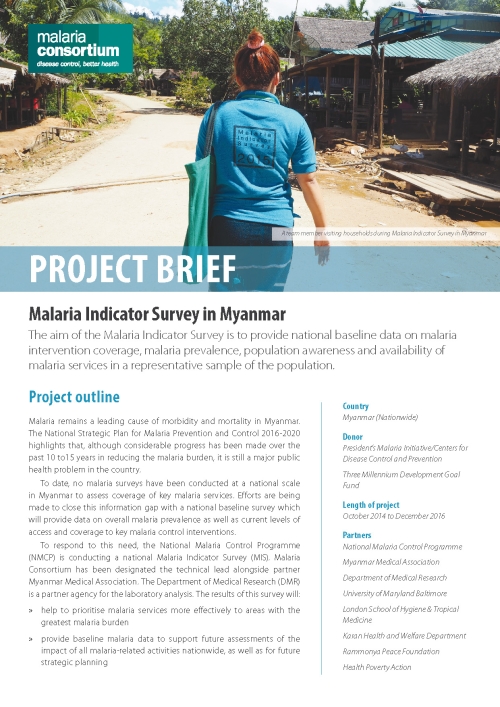Project
Myanmar Malaria Indicator Survey
The significant reduction of malaria morbidity and mortality in Myanmar is threatened by a number of factors. The largest of these threats is the emergence of drug resistant malaria parasites along the international border areas, including the Myanmar-Thailand and Myanmar-China borders as well as in some areas in central Myanmar.
However, to date no malaria surveys have been conducted at national scale to assess coverage of key malaria indicators. Although efforts are being made to improve the health information system in Myanmar, malaria data remain incomplete with regards to geographical coverage (past surveys did not fully capture hard-to-access areas), completeness, and coverage of high-risk groups.
To respond to this need, the National Malaria Control Programme will lead in conducting a national malaria indicator survey in 2015 with Malaria Consortium as the technical lead and funding support from the President’s Malaria Initiative, the US Centers for Disease Control and Prevention, the Three Millennium Development Goal Fund (3MDG), GFATM and other partners.
The results of this survey will help to prioritise malaria services more effectively to areas of greatest malaria burden and provide baseline malaria data to support future assessments of the impact of all malaria-related activities nationwide, as well as for future strategic planning. Additionally, it is hoped that the malaria survey will provide up-to-date information on malaria prevalence within each area of the country, enabling the Ministry of Health to determine if its current risk stratification is still reliable.
Back

